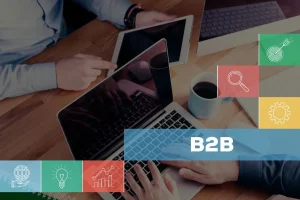6 Tips To Planning And Running A Successful Client Meeting: A Quick Guide
Planning and setting a successful client meeting can be daunting, but don’t worry. This is an opportunity to brainstorm, collaborate, and take your business forward. An engaging meeting can build trust and credibility among attendees while potentially leading to new business ventures; with the proper approach, you can transform client meetings into positive experiences that are efficient, effective, and ultimately fruitful. Here are six tips to improve your Appointment-Setting Services and make your next client meeting efficient, effective, and successful!
1. Create Meeting Agenda
The first step towards hosting an effective client meeting is creating a calendar invite and setting an agenda. This helps keep things on track and shows your client that you know which topics need to be discussed, reconsidered, and resolved to achieve optimal results. Communication and teamwork are key components to ensuring successful meetings.
Sending the agenda ahead of the meeting is an excellent way to gather client input about what needs to be covered. Both you and the client can have a clear picture of any prep work required, helping plan out the next steps more easily. Showing you care for their project while simultaneously showing professionalism will demonstrate it well!
List important topics to cover as part of your meeting agenda and objectives. Prioritise them according to importance and relevance to your client’s goals before creating plans for each topic, whether that means proposing, gathering information, making a decision, or updating.

2. Prepare Valuable Insights For a Better Understanding
Conducting in-depth research about your client can yield invaluable insights, giving your meeting attendees a more complete picture. Industry reports and visual aids such as graphics can help create a thorough presentation that clearly explains your project to ensure maximum understanding and assessment. Taking this approach allows you to better comprehend their needs while measuring reactions confidently before sharing thoughts and opinions with them.
Delivering valuable insight during client meetings is essential for cultivating strong relationships and contributing to your organisation’s long-term success. Understanding client needs is the first step; prior to any meetings with clients, identify their goals and challenges so you can offer tailored solutions more effectively and address issues more swiftly.
Conducting market and industry research is another essential step. This provides clients with information they can use to make more informed decisions and gain a competitive edge.
Bring data and statistics to meetings as evidence of your observations and recommendations. Use this evidence to highlight trends or support arguments, this will make your recommendations more persuasive. Providing actionable advice is equally essential. Identify steps clients can take to address issues or seize new opportunities. Make sure these suggestions are practical, relevant, and in line with client goals.
Be prepared to answer questions. During the meeting, your clients may need clarification regarding your insights or recommendations, so be prepared with additional information and clarification that showcases your knowledge and enhances its worth.
Follow these steps, and you will develop ideas for client meetings that showcase your expertise while meeting their concerns and helping them thrive in the long run.
3. Focus on Assisting the Client
An appointment’s primary goal should be to assist clients with their business operations. Once this meeting ends successfully, the project phase begins, and it’s important that you introduce a follow-up plan so all tasks get accomplished in accordance with what was discussed during this meeting.
Focusing on helping the client is paramount to developing strong and long-term relationships. One effective method for doing so is actively listening during meetings, listening attentively to clients’ concerns, needs, and objectives without interrupting or making assumptions about their situation. Active listening shows you care for their needs and demonstrate excellent listening abilities.
Always prioritise the client’s needs and objectives when communicating with them and offer solutions tailored specifically to them. Avoid pushing your own agenda or being self-centred—being client-oriented will build trust and strengthen your relationships.
Avoid making general suggestions without considering their unique circumstances; use your expertise to develop custom-tailored plans that truly benefit them; provide the advice, information, and expertise they seek from you as their go-to source.
By prioritising their needs first, you may build strong rapport, establish yourself as a reliable partner, and support their long-term growth.
4: Finalise the Method of Communication With the Client
Finalising the preferred means of communication is key when planning client meetings. The method will depend on factors like meeting type, client preference, and the nature of the information being exchanged; ultimately, meeting clients where they feel most at ease can ensure successful communication.
First, decide on the type of meeting. Consider its purpose and goals, such as sharing complex information. A video call, conference room meeting, or in-person meeting might be more suitable than an outbound phone conversation for this task.
Next, be sensitive to client preferences when communicating with them. Some clients might prefer phone calls or emails, while others may prefer in-person meetings or video conferencing – make sure you communicate in ways that suit each client!
Information such as confidential or sensitive documents often requires more secure forms of communication, such as encrypted email or a secure online portal.
Technical considerations are equally vital. Consider internet connectivity, device compatibility, and software requirements to ensure both you and your client can effectively use the necessary tools. Time constraints also factor into deciding the communication method you will use.
Considering these elements can help you select the most effective mode of communication for your client and ensure clear and productive interactions.
5. Reduce Interruptions to Maintain Meeting Focus
Even with an agenda in place, interruptions can quickly derail meetings. Time could run out before important topics can be covered, or you could simply get off topic. Hold meetings in a location with minimal distractions to keep to your agenda and stay on track. If clients spend too long discussing one point or the conversation veers off-topic, take a moment to redirect it back on course. Record any questions or comments participants have and offer to follow up later with answers if necessary before moving on to the next topic on the agenda.
Sometimes, a friendly relationship with your client can become another distraction due to personal and social chatter. To prevent this from occurring, be sure to schedule some time at the end of each meeting for social chatter.
By keeping these strategies in mind during meetings, you can reduce disruptions and maintain focus to ensure all essential topics are covered efficiently.
6: Be Active and Understand what Your Client wants to say
Not every meeting goes exactly according to plan; sometimes, clients might have their own agenda or wish for you to take things in an unexpected direction. Listen and understand what they have to say while remaining flexible!
When an unexpected request or question comes your way, remember not to respond immediately. Doing so might end up costing you dearly later. Instead, ask any necessary questions to clarify what they need from you while at the same time informing them you need time to think up the best solutions for them.
You can better meet their needs and strengthen relationships by actively listening and responding appropriately. Being flexible yet thoughtful when responding ensures optimal project results.
Define Meeting Strategies for Different Scenarios
No two client meetings are alike; here’s a handy guide on adapting your approach depending on the meeting type:
Initial Meetings:
Focus on introductions and building a solid relationship from the outset. Use this time to understand client needs and goals while creating an excellent first impression by being organised and professional.
Update Meetings:
Conduct these to provide progress reports and receive client feedback on what has been accomplished to date. Discuss any necessary adjustments, build trust among all involved, and ensure everyone stays on the same page.
Decision-Making Meetings:
These meetings are crucial. Be ready with all necessary data, handle objections or inquiries quickly and present clear recommendations to your client in a clear and concise manner.
Crisis Meetings:
Remain calm and propose solutions. Acknowledge any errors made while seeking ways to resolve the situation efficiently and effectively. Your goal should be to rebuild trust between yourself and the client as you establish a path forward together.
By adapting your strategy to fit the type of meeting, you can ensure more successful and fruitful interactions with clients.
What are Common Mistakes During Client Meetings?
Client meetings are essential, but some mistakes can make them ineffective. One major pitfall is failing to prepare properly—being unprepared can leave you looking unprofessional and waste your prospect’s time.
Unanalysable agenda-setting can also be a problem, leading to meetings veering off-track without proper guidance and leaving key issues unaddressed. Therefore, a detailed plan for guiding discussion is essential for its success.
Communication errors can also be an enormous source of problems. Failing to clearly articulate your points can result in miscommunication and negatively alter the meeting outcome; always strive for clear and concise messaging.
Failing to listen is another error. If you spend most of your time monologuing instead of engaging in a two-way conversation with clients, they could end up feeling neglected and undervalued – an active approach is vital for successful meetings!
Not following up after the meeting can result in lost opportunities and diminished communication, so it is imperative that action is taken post-meeting to keep the momentum alive and ensure all discussed points have been resolved.
Avoiding these mistakes will make your client appointments more effective and fruitful.




